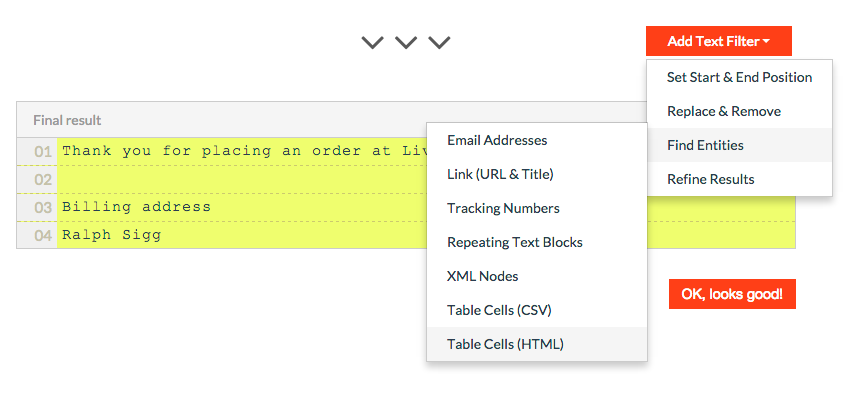Extract repeating text blocks from e-mails is something we see very often at Mailparser. Two prominent use-cases come to mind when it comes to parsing repeating elements:
Parsing “Saved search” e-mail notifications
A lot of online platforms allow you to save a search query and receive an e-mail each time there are new results. For example if new websites are on sale at Flippa, if Google Alerts finds new results, if new real estate or car sales listings are online and so on.
In case your business relies on the data trapped inside those e-mails and you find yourself copy & pasting the data by hand into another program like Excel, do yourself a favour and automate this task with Mailparser.
Create a Mailparser account
Whenever you receive an e-mail with new listings, just send it over to your @mailparser.io inbox and get the parsed data back in return within seconds.
Parsing line items from purchase orders
In case you are selling products on e-commerce platforms like Amazon or with your own webshop, you probably receive an order confirmation or purchase order by e-mail each time you made a new sale. Most of time, those e-mails contain important information about the order like the Order ID, the shipping address, the ordered items etc.
A lot of our customers use Mailparser to extract this data and automatically copy it to another software. By doing so, our customers automate their order fulfillment process and save valuable time.
So in case you are selling products online and get purchase orders for each sale by e-mail, you probably can automate your business by parsing relevant data from e-mails. Think about it for a second!
So how can you parse repeating text elements?
Depending on how your e-mail is structured, there are basically two tools available in Mailparser. If the relevant table is stored inside a HTML table, you can use our “Table Cells (HTML)” filter:
If the data you want to extract is stored as repeating text blocks, you can use the “Repeating Text Blocks” filter. This filter will give you the option to either split the text into slice of N lines, or identify a new text block by a pattern you provide.
Both of these filters will give you a structured and easy-to-handle version of your repeating text data. You can then send this data to another web app via webhooks or download the data as a Spreadsheet Excel File.

